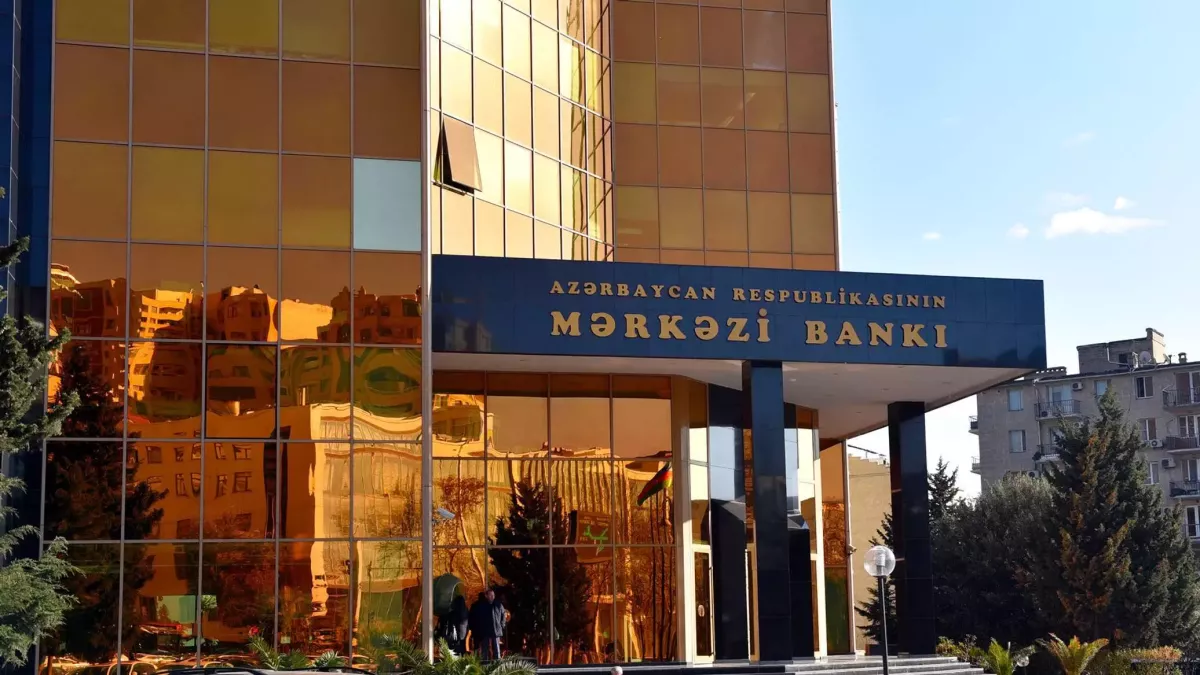International rating agencies assess Azerbaijan's banking sector Between growth and risks
Since the end of 2023, a decline in inflation rates, combined with the Central Bank of Azerbaijan's (CBA) efforts to lower key interest rates and stabilize the liquidity market, has fueled increased activity among banks and non-bank credit organizations (NBCOs). As a result, their loan portfolios grew by 22.1% in 2024.
According to representatives from Fitch Ratings, the financial profile of Azerbaijan's banking sector has significantly improved in recent periods, and key financial indicators are expected to remain stable throughout the year. Similarly, experts at international rating agency S&P Global Ratings have upgraded Azerbaijan's Banking Industry Country Risk Assessment (BICRA) from "stable" to "positive" in early February, reflecting confidence in the sector's continued growth.
As inflation expectations in Azerbaijan decrease, following a global trend, the focus has shifted towards enhancing GDP growth, increasing business financing, and liberalizing monetary policy. Against the backdrop of a reduced key interest rate by the Central Bank of Azerbaijan (CBA), a trend toward monetary policy liberalization has emerged. In line with this shift, the CBA lowered the refinancing rate multiple times from the end of 2023 through June 2024, reducing it from 9% to 7.25%. This adjustment reflects the regulator's confidence in keeping inflation levels close to the target range of 4±2% for 2024, and this forecast is likely to remain largely stable throughout the year.
This positive trend was most evident in the growth of domestic credit institutions in 2024, a development that continues to play a dominant role in the banking sector. Currently, the banking sector accounts for approximately 94% of Azerbaijan's entire financial system.
According to recent data from the Central Bank of Azerbaijan (CBA), the loan portfolio of domestic banks and non-bank credit organizations (NBCOs) surpassed 29.288 billion manats ($17.2 billion) in 2024, reflecting a growth of 22.1% compared to 2023. A positive trend is also seen in the relatively low growth rate of overdue loans, which rose by only 2.6%, totalling 449.1 million manats ($264 million). Overdue loans now account for just 1.5% of the total loan portfolio of banks and NBCOs, a slight improvement from 1.8% at the end of 2023.
Furthermore, the effectiveness of the regulator's policy on de-dollarizing the country's financial system is evident. In 2023, loans issued in the national currency reached nearly 24.773 billion manats ($14.5 billion), a 26.8% increase, while loans in foreign currency amounted to only 4.515 billion manats ($2.6 billion), growing by just 1.7%.

According to the regulator's statistics, the highest credit activity last year was driven by state-owned banks, which issued loans totalling more than 7.150 billion manats ($4.2 billion), showing a growth of 30.1%. The loan portfolio of private banks grew by 14.9%, reaching approximately 20.327 billion manats ($11.9 billion), while the dynamics of non-bank credit organizations (NBCOs), which provided loans totalling over 1.810 billion manats ($1 billion), increased by 2.3 times compared to the previous year.
This progress has been recognized by international rating agencies, with S&P Global Ratings being the most optimistic. The agency recently upgraded Azerbaijan's Banking Industry Country Risk Assessment (BICRA) from "stable" to "positive." According to S&P experts, the positive industry risk trend reflects initiatives aimed at enhancing the regulation and supervision of financial institutions in Azerbaijan over the past two years, particularly as part of the "Financial Sector Development Strategy for 2024-2026."
In this context, the Central Bank of Azerbaijan has introduced new corporate governance standards for banks, regulations limiting transactions with affiliated parties, and liquidity risk management measures in line with Basel III requirements. Additionally, the regulator plans to transition to risk-based supervision in 2025–2026, revise the capital adequacy structure to meet Basel III standards, and strengthen stress-testing requirements for banks.
Meanwhile, S&P affirmed the rating of Azerbaijani banks at "bb-", believing that the domestic banking sector benefits from favourable macroeconomic conditions, driven by high commodity prices, which stimulate loan demand and improve asset quality.
Experts from the rating agency Fitch Ratings highlighted the positive assessment of Azerbaijan's banking sector development last autumn. According to Fitch, the financial profile of Azerbaijan's banking sector has significantly strengthened since 2017, driven by a reduction in dollarization levels and decreased pressure on capitalization. Improvements in the sector were also supported by a more efficient loan portfolio structure, stricter regulatory oversight, the development of the financial market, and an overall improvement in the business climate.
Moreover, banks have become less risk-averse when it comes to large, long-term, and dollarized corporate loans. A key achievement was the reduction in the volume of toxic loans, which fell to a record low in 2024 compared to the end of 2018. This progress was facilitated by decisive actions to clean up the balance sheet of the International Bank of Azerbaijan and the revocation of licenses from several weak and small banks between 2016 and 2023.
It is important to note that following the devaluation of the manat and the banking crisis of 2015–2016, the Central Bank of Azerbaijan (CBA) undertook a large-scale rehabilitation of the credit sector. As a result, the number of banks in Azerbaijan has gradually decreased from 45 in 2015 to just 22 at present.
The continuation of positive trends in Azerbaijan's banking sector in 2025 was recently reported by Maxim Malyutin, Deputy Director for Banks in the CIS+ and Middle East countries at the international rating agency Fitch Ratings. "In recent years, the financial profile of Azerbaijan's banking sector has significantly improved. Our outlook for the banking sector of Azerbaijan is neutral, meaning we expect the key financial indicators to remain stable this year," Malyutin said, emphasizing that from a liquidity standpoint, the sector is in a stable position, and by the end of 2024, the balance between the loan portfolio and the sector's assets remained well-managed.

According to recent data from the Central Bank of Azerbaijan (CBA), by the end of December 2024, the largest share (58.1%) of bank and NBCO credit investments was allocated to consumer loans and household credit, which saw an increase of 21.6% during the reporting period, reaching nearly 17.031 billion manats ($10 billion). While consumer lending has its advantages and covers a large portion of the population, it also presents a challenge due to its relatively unpredictable nature, influenced by various risk factors.
As demonstrated by the experience of neighbouring countries, global contingencies—such as a drop in energy commodity prices or high imported inflation—could lead to monetary instability, a decrease in household income, and, in turn, a payment crisis. This situation could be exacerbated by high borrower debt levels or financial illiteracy. As a result, regulators globally tend to approach the rapid growth of consumer lending with caution, implementing rigorous supervision.
This approach is particularly relevant for Azerbaijan, given that the share of consumer lending in the total loan portfolio of domestic banks is substantial, surpassing the volume of loans issued to sectors such as industry, agriculture, ICT, and other key areas of the real economy.
"Azerbaijani banks have reduced their interest in long-term and large corporate loans; on the contrary, they prefer retail lending. It is less risky and more profitable. By the end of 2024, the share of retail loans in the sector approached 60% (compared to just 40% at the end of 2018). Thus, in recent years, there has been significant growth in this area," noted Malyutin, adding that the capital adequacy ratio of the banking sector has slightly decreased since 2020. The primary reason for this is the growth of retail loans, as the risk coefficient for these types of loans is higher. However, the ratio still significantly exceeds the minimum regulatory threshold of 5% and is expected to remain stable in 2025.
Earlier, Fitch Ratings noted that "Azerbaijan's cyclical economy, with its structural weaknesses, means that loan quality in the corporate segment remains vulnerable." Undoubtedly, the presence of such imbalances in the country's financial sector serves as a reason for further reforms in the banking sector and efforts by the regulator to optimize prudential regulation.








